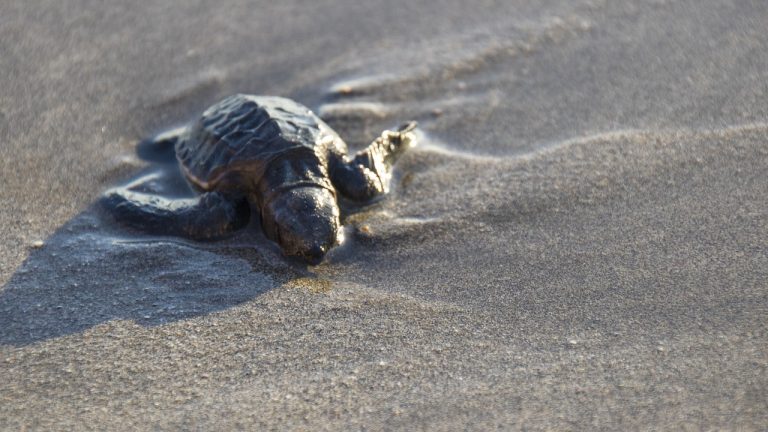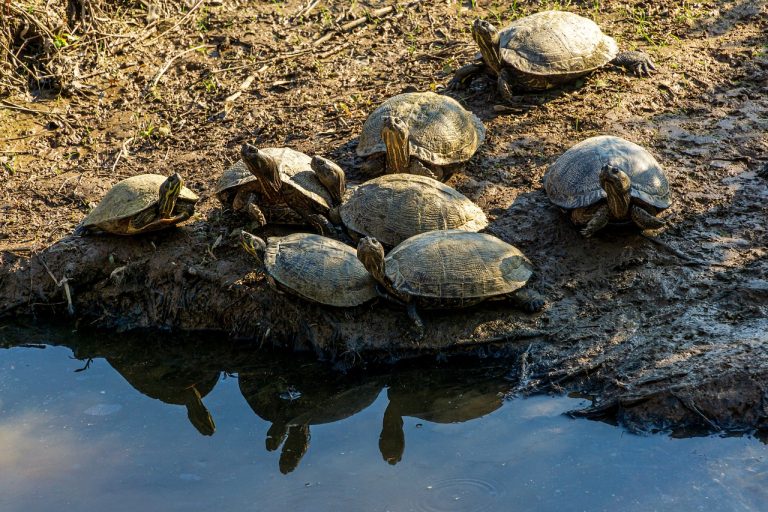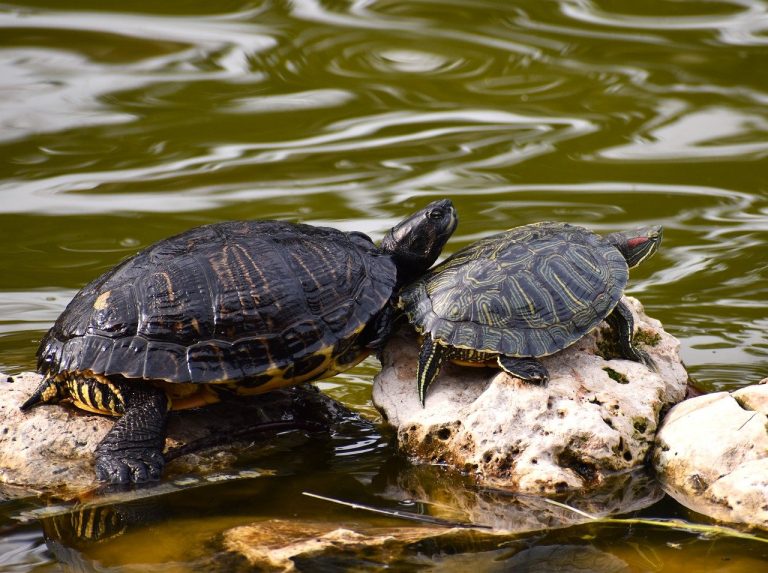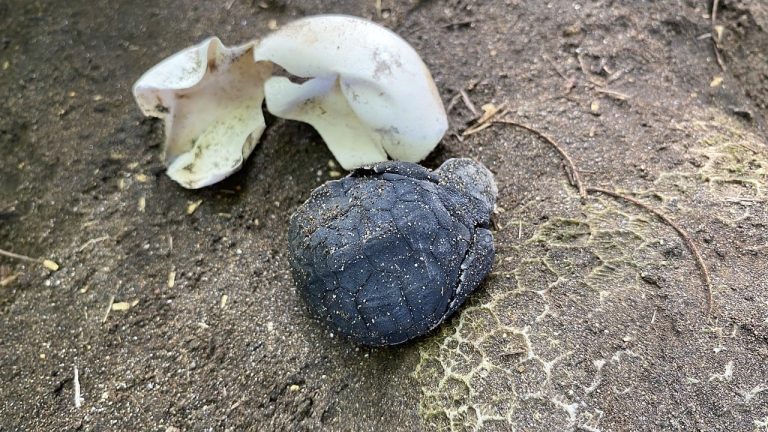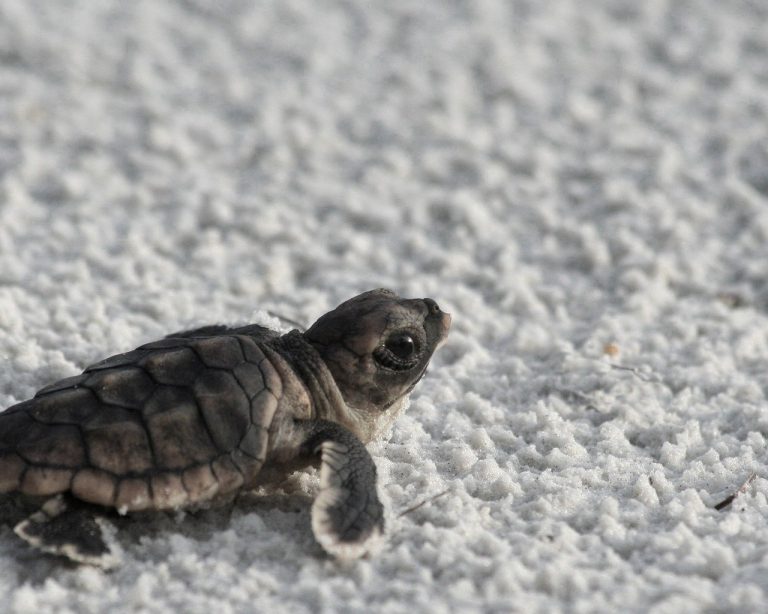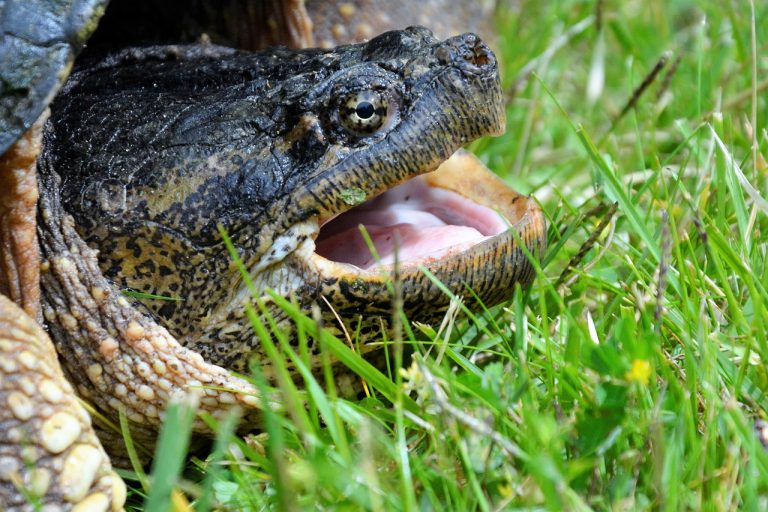Greens To Proteins: A Guide To Feeding Red-Eared Sliders
The red-eared slider is often recommended as an ideal starter turtle for beginners. However, ensuring proper feeding and nutrition for red-eared sliders is crucial for their well-being in captivity. Unfortunately, many beginners struggle in this area, leading to shortened lifespans for their pets due to inadequate diets.
In this article, I will delve into the specifics of feeding red-eared sliders and provide guidance on how to offer them a balanced diet on a daily basis.
General Guidelines When Feeding Turtles:
The first step in providing a balanced diet for your turtle is to select food that contains both protein and vegetables. For hatchlings, aim for a diet consisting of approximately 75% protein and 25% vegetables, while adult turtles should have a diet with 75% vegetables and 25% protein. It’s important to note that baby turtles require more protein initially, but as they mature, their diet should gradually shift towards more vegetables.
Dark green leafy vegetables are a favorite among turtles, and carrots can also be included in their diet on a daily basis. However, for baby turtles, vegetables should only be offered once or twice a week.
Just like humans, turtles require calcium in their diet to strengthen their bones and shells. While turtles can’t consume milk like humans, providing calcium is straightforward. You can purchase turtle calcium bones from pet stores, which serve as an excellent calcium source. Alternatively, you can create your own calcium supplement by baking eggshells in the oven at 300 degrees Fahrenheit for 30 minutes, then grinding them in a blender. Sprinkle some of this homemade calcium powder into your turtle’s water during feeding times.
Feeder fish can be a valuable addition to an adult turtle’s diet, as they stimulate the turtle’s hunting instinct and provide entertainment. One feeder fish per day is sufficient for an adult turtle, but be sure to remove any uneaten fish waste promptly.
To save both money and time, consider buying turtle food in bulk. Store the food in a dry, cool area to prolong its shelf life.
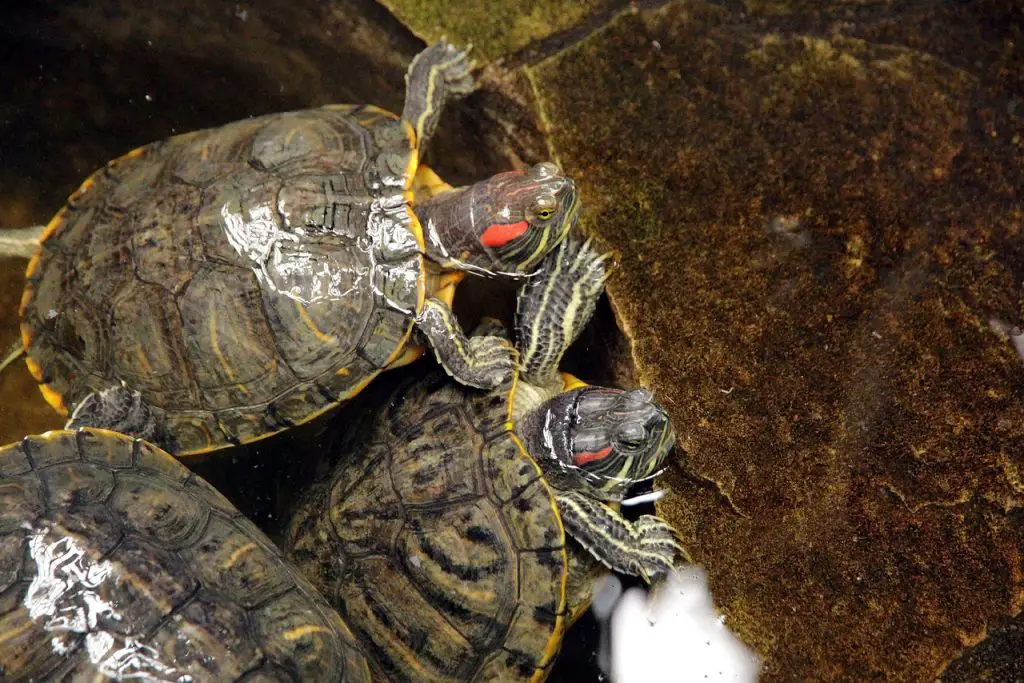
Proper Diet For Red Eared Slider:
A well-rounded diet for red-eared sliders should include a balanced combination of live protein, commercial food, and vegetables, with water plants comprising a significant portion. Over-reliance on commercial food alone is a common mistake made by many turtle owners, which can significantly impact the health and longevity of the turtle.
Safe vegetable options for red-eared sliders include dandelions, mustard greens, carrot tops, bell peppers, squash, and romaine lettuce. It’s crucial to ensure that the vegetables have not been treated with pesticides before feeding them to your turtle.
Preferable water plants for turtles include water lettuce, water hyacinth, frogbit, anacharis, duckweed, and hornwort. These plants are low-maintenance and can be cultivated in a separate enclosure. Purchasing them in bulk is cost-effective.
Fruits should be offered to red-eared sliders sparingly, as treats, rather than as a primary part of their diet. In the wild, red-eared sliders do not typically consume fruits, and overfeeding fruits can lead to various health issues. Banana can be a suitable fruit treat option.
When selecting commercial food for your turtle, opt for options with low protein and low fat content. Avoid purchasing dried shrimps, as they offer little to no nutritional value and can be likened to “fast food” for turtles. While turtles may show enthusiasm for dried shrimps, they should not be relied upon as a staple part of their diet.
How Often Should You Feed A Red-Eared Slider?
Red-eared sliders are notorious for their voracious appetites, readily devouring any food offered to them. Their insatiable hunger can lead them to overeat if not monitored closely.
However, continuously feeding your slider can be a grave mistake, as it can result in obesity, fatty liver disease, or even premature death. To avoid such health issues, it’s crucial to establish and maintain a healthy diet regimen tailored to the turtle’s age and nutritional needs.
For hatchling and juvenile sliders, which experience rapid growth, feeding should occur at least once per day. Their diet should consist of a higher percentage of protein (around 70%) than vegetables (about 30%). Including pellets as part of their protein-based diet is advisable, comprising about a quarter of their total protein intake.
Although hatchlings may initially reject vegetables, it’s essential to offer them in small amounts daily. Additionally, ensure they receive a daily source of protein, whether through pellets or insects.
Juvenile sliders may show a willingness to consume vegetables, so it’s beneficial to introduce them to various types. Protein-based meals can be offered intermittently as treats.
In contrast, adult sliders do not require frequent feeding. Offering vegetables at least three times a week and protein once a week is sufficient. Unlike hatchlings and juveniles, adults should be provided with more vegetables and less protein in their diet.
Red-Eared Slider Feeding Schedule
Indeed, red-eared sliders are known for their hearty appetites, but overfeeding them can lead to various health problems and even mortality. Therefore, adhering to a proper feeding schedule is essential for the well-being of your pet.
For hatchlings, which are typically less than six months old, daily feeding is recommended. At this stage, they require a diet rich in protein to support their rapid growth. Ensure that the food portion is approximately the size of their head to prevent overconsumption.
Juvenile sliders, aged six months to two years, should also be fed daily. Introducing a variety of vegetables into their diet on a regular basis is beneficial, while protein sources can be offered occasionally to complement their nutrition.
Adult sliders, aged over two years, require feeding at least three times a week. Their diet should consist of a higher proportion of vegetables compared to protein sources, reflecting their reduced growth rate and energy requirements.
Does Red Eared Sliders Need Nutritional Supplements?
Absolutely, incorporating nutritional supplements into your turtle’s diet is crucial for ensuring they receive all essential vitamins and minerals. Opt for a reputable reptile multivitamin that contains calcium and vitamin D3, as these are particularly important for maintaining healthy bones and shell development.
Mixing the supplement with your turtle’s food a few times a week will help ensure they receive a well-rounded and balanced nutrition profile. This approach helps address any potential deficiencies and promotes overall health and well-being for your turtle.
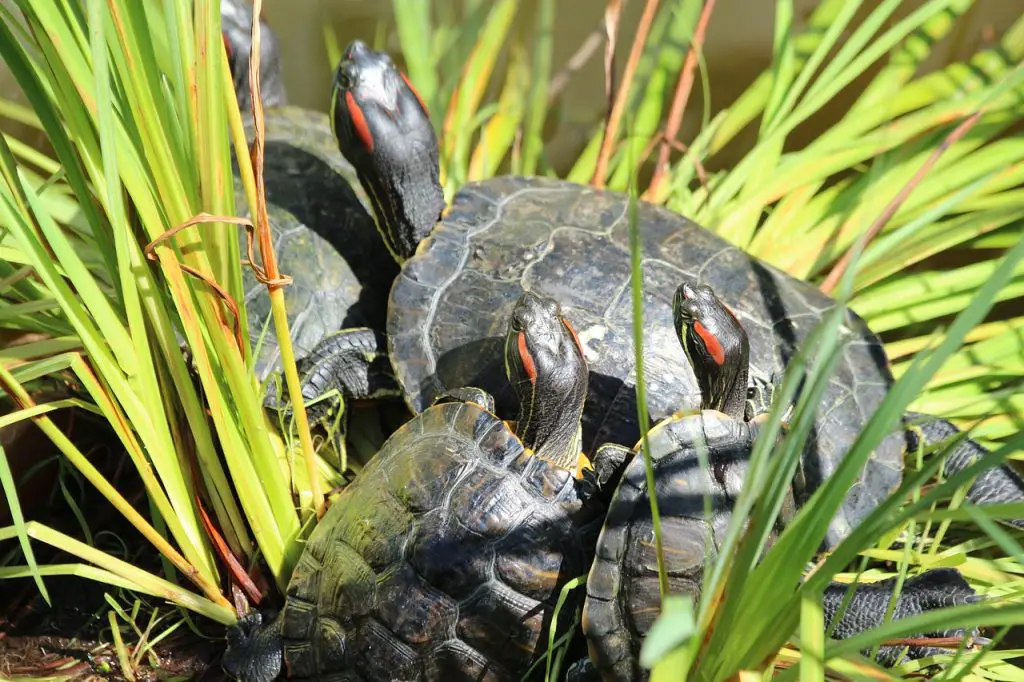
Red Eared Slider Turtle Food List:
For a well-balanced diet for your red-eared slider turtle, aim to include a variety of foods from each category in their meals:
Vegetables (50%):
- Mustard greens
- Collard greens
- Dandelion leaves
- Bok choy
- Kale
- Romanian Lettuce
- Sweet potatoes
- Squash
- Carrots
- Green beans
- Endives
- Tomatoes
- Parsley
- Swiss chard
- Turnip greens
Protein (25%):
- Earthworms
- Silkworms
- Waxworms
- Bloodworms
- Crickets
- Daphnia
- Small Aquatic Snails
- Mealworms
- Tubifex worms
- Shrimps
- Feeder fish (ensure they are parasite-free)
Commercial Food (25%):
- Choose a commercial food with low fat and protein.
Fruits (Occasional Treats):
- Shredded apples
- Bananas
- Melons
- Berries
- Grapes
- Peaches
- Plums
- Nectarines
Nutritional Supplements (Twice a week):
- Choose a reptile multivitamin rich in vitamin D3 and calcium.
Ensure you provide a varied diet to meet all their nutritional needs, and avoid feeding Iceberg lettuce as it lacks nutritional value for turtles.
Food Red-Eared Sliders Can’t Eat
It’s important to avoid certain foods when feeding your red-eared slider to prevent digestive issues and potential health problems. Here’s a list of foods to avoid:
- Chard
- Spinach
- Rhubarb
- Cabbage
- Bok choy
- Broccoli
- Brussels sprouts
- Radishes
- Iceberg lettuce
- Unripe tomatoes and tomato plants
- Potato leaves
- Tobacco leaves
- Dairy foods
- Fatty foods
- Bakery foods
- Sugary foods
- Wild-caught prey
By steering clear of these foods, you can help maintain your red-eared slider’s health and well-being.
Explanation:
Indeed, avoiding certain foods is crucial for maintaining the health of your red-eared slider. Here’s a detailed explanation of why these specific foods should be avoided:
- Chard, spinach, and rhubarb: These contain high levels of oxalic acid, which can inhibit calcium absorption.
- Cabbage, bok choy, and broccoli: They contain oxalates, which can lead to kidney failure and thyroid problems in red-eared sliders.
- Brussels sprouts and radishes: These contain goitrogens, which can disrupt thyroid gland function.
- Iceberg lettuce: While it doesn’t contain harmful chemicals, it lacks nutritional value due to its high water content, potentially leading to malnourishment.
- Unripe tomatoes and tomato plants: These can be toxic to sliders.
- Potato leaves and tobacco leaves: Both are toxic to sliders.
- Dairy products: Sliders lack the enzymes needed to digest lactose found in dairy, leading to digestive issues.
- Fatty foods: These can cause kidney failure and obesity.
- Bakery and sugary foods: Bread and chocolates, for example, can cause digestive problems.
- Wild-caught prey: Raw fish and meat may harbor intestinal parasites, posing health risks to your pet.
By avoiding these foods, you can help ensure the well-being and longevity of your red-eared slider.
Feeding Red-Eared Sliders Fruits
Absolutely, while fruits can be a delightful treat for your red-eared slider, it’s important to offer them in moderation due to their high sugar content, which can lead to digestive issues like diarrhea if consumed excessively. Here are some fruits that you can occasionally offer to your pet:
- Apples
- Bananas
- Berries (such as strawberries, blueberries, raspberries)
- Watermelons
- Pears
- Grapes
- Mangoes
- Kiwi
- Cantaloupe
- Plums
- Carambola (Starfruit)
Remember to offer these fruits sparingly, and always ensure they are fresh and washed thoroughly before feeding them to your red-eared slider.
Tips On Feeding Feeder Fishes To Turtles:
Feeder fish like goldfish, guppies, mollies, platies, swordtails, and minnows can be a beneficial addition to a red-eared slider’s diet. These feeder fish help stimulate the turtles’ hunting instincts, promoting their natural behavior and overall health. When feeding feeder fish, it’s important for the turtle to consume the entire fish, including its guts, as it provides a complete nutritional package.
However, it’s advisable to avoid oily fishes like smelt and mackerel, or to offer them only occasionally, as they may not be suitable for regular consumption.
Feeding wild-caught fish to turtles is not recommended due to the potential risk of parasites and other pathogens they may carry.
For the protein component of a red-eared slider’s diet, adults should aim for it to make up around 50% of their overall diet, while baby turtles may require a higher proportion, ranging from 70-80%.
While frozen fish can be an option, it’s worth noting that freezing can degrade the vitamin B1 content of the fish, so fresh options are preferred.
Cooked proteins like beef and chicken should be provided sparingly and as a treat, as they may not offer a balanced nutritional profile and can quickly degrade water quality if left uneaten. If offering cooked proteins, it’s best to do so in a separate feeding tank to avoid water contamination.
Lastly, feeding raw meats to turtles in captivity is not recommended due to the potential risk of bacterial contamination, posing health hazards for both the turtle and its owner.
Tips On Feeding Vegetables To Turtles:
When feeding vegetables to your turtle, opt for varieties that float on the water’s surface. These types of vegetables allow your turtle to nibble on them at its leisure.
Ensure to remove any leftover vegetables from the tank daily to prevent them from rotting and compromising the water quality.
Avoid feeding iceberg or head lettuce to turtles, as they contain mostly water and lack significant nutritional value.
Always inspect water plants before offering them to your turtle, as some varieties may be toxic to turtles.
When feeding fruits, be aware that they disintegrate quickly in water, creating a mess. To prevent this, consider offering fruits in a separate bowl or tank.
For baby turtles, it’s beneficial to shred vegetables to facilitate easier consumption. However, this is not necessary for adult turtles.
While fruits are not a natural part of a red-eared slider’s diet in the wild, they can be given occasionally as a treat. Just be sure to offer them in small amounts, as excessive fruit consumption can lead to diarrhea in turtles.
There can be several reasons why red-eared sliders might refuse to eat. Some common factors to consider include:
- Inadequate swimming space: Ensure your turtle has enough room to swim comfortably in its enclosure.
- Lack of a basking area: Provide a suitable basking spot where your turtle can dry off and regulate its body temperature.
- Incorrect temperature ranges: Maintain proper temperature gradients within the enclosure, including both water and basking areas.
- Absence of UVB light: Ensure your turtle receives sufficient UVB light, which is essential for calcium metabolism and overall health.
- Monotonous diet: Offer a varied diet to prevent boredom and encourage appetite. Avoid feeding the same type of food every day.
- Stress: Identify and address any sources of stress in the turtle’s environment, such as loud noises or handling.
- Changes to the enclosure: Avoid sudden changes to the turtle’s habitat, as this can disrupt its routine and lead to refusal to eat.
- Environmental temperature fluctuations: Monitor and regulate the ambient temperature in the turtle’s environment to prevent fluctuations that may affect appetite.
- Health issues: If your turtle continues to refuse food despite addressing other factors, it may be experiencing health problems such as respiratory infections. Consult a veterinarian for proper diagnosis and treatment.
What Do Red-Eared Sliders Eat In The Wild?
Indeed, red-eared sliders are omnivorous and consume a diverse range of foods in their natural habitat. Their diet may include:
- Aquatic vegetables and water plants: Red-eared sliders often feed on aquatic vegetation such as algae, duckweed, and water lettuce.
- Small fishes: They prey on small fish species found in their environment.
- Frogs: Red-eared sliders may consume frogs and tadpoles if they encounter them in the water.
- Dead fishes: They may scavenge on dead fish carcasses floating in the water.
- Grasshoppers and caterpillars: These terrestrial insects are occasional prey items for red-eared sliders, especially when they venture onto land.
- Earthworms: Sliders may consume earthworms and other small invertebrates found in the soil or near water bodies.
- Spiders: While less common, red-eared sliders may opportunistically consume spiders if they encounter them.
- Flowers and grass: They may nibble on aquatic and terrestrial plants, including flowers and grasses.
- Berries: Some species of berries may be consumed if they fall into the water or are accessible along the shoreline.
- Over-ripened fruits fallen from trees: Red-eared sliders may consume over-ripened fruits that have fallen into the water or along the water’s edge.
- Carrion: They may scavenge on carrion, including dead animals found in or near the water.
This diverse diet reflects their opportunistic feeding behavior and ability to adapt to various food sources available in their habitat.
Do Red-Eared Sliders Need To Eat Every Day?
As previously mentioned, it’s crucial to feed hatchling and juvenile red-eared sliders daily due to their rapid growth and higher metabolism. This frequent feeding schedule should be maintained until the slider reaches approximately two years of age.
How Many Pellets To Feed Red-Eared Slider?
When feeding pellets to your red-eared slider, aim to provide an amount equivalent to the size of its head. The specific number of pellets is less important than ensuring the portion size is appropriate for your turtle’s size.
Frequently Asked Questions:
Here are the responses to your questions:
- How often to feed my red-eared slider?
- For young turtles, it’s recommended to feed them daily, while adult turtles can be fed two to three times a week. As they age, their diet should transition from protein-focused to vegetable-focused.
- Does my red-eared slider need nutritional supplements?
- Yes, providing a reptile multivitamin at least twice a week is recommended to ensure your turtle receives all essential nutrients, even with a balanced diet.
- Doesn’t my red-eared slider need to drink water?
- Yes, red-eared sliders do need water, but they obtain it while swimming and from their environment. Ensure their tank water is clean and regularly maintained.
- Can a red-eared slider turtle eat apples?
- Yes, shredded apples can be given to red-eared sliders as a treat due to their high sugar content.
- What kind of human food can you feed a turtle?
- Turtles can eat various human foods such as potatoes, green beans, apples, berries, bananas, and carrots, among others.
- Can red-eared sliders eat cucumbers?
- Yes, red-eared sliders can eat cucumbers occasionally, but they don’t offer significant nutritional value.
- Can a turtle eat bananas?
- Yes, turtles can eat bananas, but they should be given sparingly due to their high sugar content.
- Can a turtle eat chicken?
- Yes, turtles can eat cooked chicken, but raw meats should be avoided due to the risk of bacterial contamination.
- Can my turtle eat tomatoes?
- Yes, turtles can eat tomatoes occasionally, but it’s best to limit them to once a week.
- Can red-eared slider turtles eat grapes?
- Yes, they can eat grapes, but they should only be given as an occasional treat due to their high sugar content.
- Can turtles eat lettuce?
- Yes, turtles can eat Romanian lettuce, but iceberg lettuce should be avoided as it lacks nutritional value.
- Can turtles eat watermelon?
- Watermelon can be given as an occasional treat to turtles.
- Can turtles eat strawberries?
- Yes, turtles can eat strawberries as well as other berries, but they should be given sparingly as a treat.
